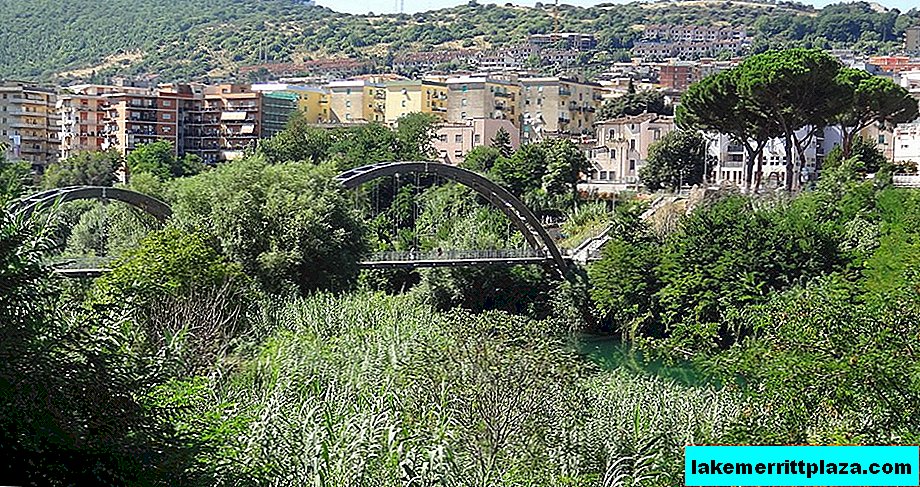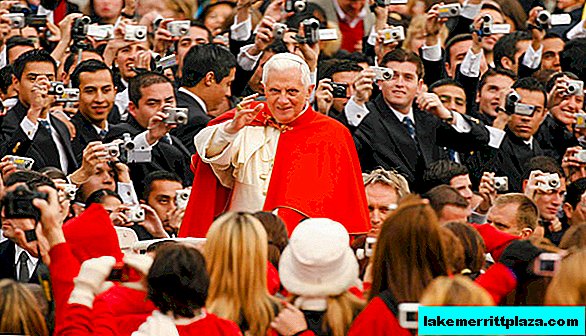The Temple of Vesta (Tempio di Vesta) in Tivoli, from which there is only a rotunda and fragments of walls, is equally attractive to connoisseurs of ancient architecture and lovers of nature and beautiful views. Nearby is the worse-preserved Temple of the Sibyls (Tempio di Sivilla) and the famous Sibilla Restaurant.

History of creation
The temple was built in the 1st century BC on the hill of the ancient acropolis of the city of Tibur, as Tivoli was previously called. Etruscan rule and Greek artistic traditions had a strong influence on local art, affecting also architecture. The base of the structure, as it were, grows out of the rock, harmoniously continuing it, and rushes to an elegant round rotunda on ten columns of the Corinthian style (initially there were eighteen).
The frieze is decorated with reliefs depicting bull skulls (tribute to the Roman tradition of sacrifice), and heavy garlands hanging from them. A cella is inscribed in the circle of the rotunda - the core of the entire building, the place where the rites were held. The dome of the rotunda had an opening for the exit of the smoke of the sacred fire burning here in honor of Vesta.
Entrance to the cell, according to Etruscan custom, was cut through only one (from the front side of the building). Nearby are the picturesque waterfalls of the Agnien River, contrasting with the heavy walls of the sanctuary.
The Temple of Vesta has retained the name of its creator - as the inscription on the architrave says, his name was Lucius Gellius. It is not known who he was dedicated to - Vesta, Hercules, the prophetess Albunei or the local hero Tiburn. Nearby is another unidentified sanctuary - presumably the temple of the Sibyl of Tiburtinsky, the things of the virgin who lived in these places. In addition to the rectangular skeleton and two ionic columns, nothing was preserved from the building, and this temple is much inferior in picturesqueness to its round brother. The walls were decorated with paintings that did not survive to this day.
Further fate
In the 4th century Roman emperor Theodosius (Flavius Theodosius) ordered to close the temple of Vesta. Thus began the period of desolation. Later, the building was turned into the Catholic Church of Santa Maria della Rotonda (Santa Maria della Rotonda)that greatly contributed to the preservation of the ancient monument. But in the XVI century. the church ceased to function, and all Christian annexes were demolished. It is curious that the church of St. George was also located in the temple of Sibyl of Tiburtinsky for a long time.

More than these two interesting monuments of ancient architecture have not been restored. But the area in which they were located underwent restoration. By order of Pope Gregory XVI (Gregorius PP. XVI), in 1835, work was carried out to restore the floodplain of the Agnienne River, which suffered from the flood of 1826, thanks to which you can admire wonderful grottoes and waterfalls from the hills.
Some buildings outside of Italy were copied from the Sanctuary of Vesta: its imitation in the Royal Botanic Gardens in Kew (UK), Mussenden in Downhill (Northern Ireland), the Temple of Love in Little Trianon (France).
Where is

The temples are part of the park ensemble of Villa Gregoriana in Tivoli. Other Tivoli attractions, Villa d'Este, can be reached in 15 minutes on foot. Tivoli is a great place for a country vacation; cozy restaurants are scattered around in many places. Read my review about the Sibilla restaurant overlooking the waterfall, which is located right next to the temple - I sincerely recommend it. Here is an instruction how to get to Tivoli.








